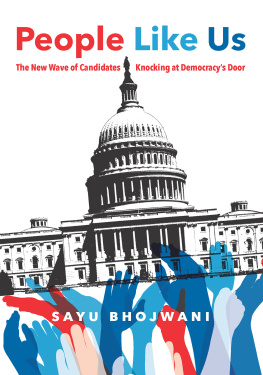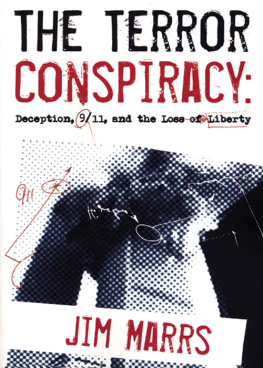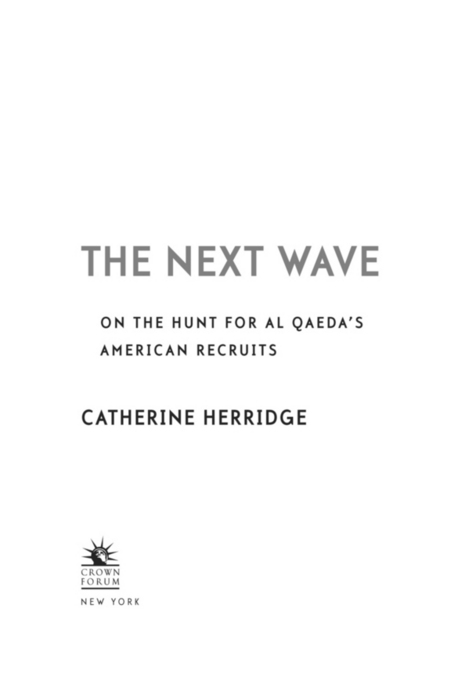
This author is available for select readings and lectures. To inquire about a possible appearance, please contact the Random House Speakers Bureau at or (212) 572-2013.
http://www.rhspeakers.com/
Copyright 2011, 2012 by Catherine Herridge
All rights reserved.
Published in the United States by Crown Forum, an imprint of the Crown Publishing Group, a division of Random House, Inc., New York.
www.crownpublishing.com
CROWN and the Crown Forum colophon are registered trademarks of Random House, Inc.
Originally published in hardcover in the United States in slightly different form by Crown Forum, an imprint of the Crown Publishing Group, a division of Random House, Inc., in 2011.
Library of Congress Cataloging-in-Publication Data
Herridge, Catherine.
The next wave : on the hunt for al Qaedas American recruits / Catherine Herridge.1st ed.
p. cm.
1. TerroristsUnited States. 2. TerrorismReligious aspectsIslam. 3. MuslimsUnited States. 4. Islamic fundamentalism. I. Title.
HV6432.H477 2011
363.3250973dc22 2010053585
eISBN: 978-0-307-88527-2
Cover design by Kyle Kolker
Cover photography UpperCut Images
v3.1
For my parents and for those who serve
CONTENTS
MAJOR CHARACTERS INTHE NEXT WAVE
The Next Wave is written in an episodic style to reflect the nature of investigative reporting. For clarity, a list of the major players involved is included.
Anwar al-Awlaki: Al Qaeda 2.0s leader. Born in New Mexico and raised in Yemen, he was the first American placed on the CIAs kill or capture list. Al-Awlaki had multiple connections to 9/11 hijackers in San Diego, California, and Falls Church, Virginia. He was killed by a drone strike in Yemen on September 30, 2011.
Nawaf al-Hazmi: He and fellow Saudi Khalid al-Mihdhar were the first two hijackers to arrive in the United States in January 2000. This 9/11 advance team worshiped at al-Awlakis San Diego mosque. Al-Hazmi also worshiped at al-Awlakis Virginia mosque in the spring of 2001.
Khalid al-Mihdhar: He and fellow Saudi Nawaf al-Hazmi met with al-Awlaki on a regular basis in a private anteroom at the San Diego mosque. Like his fellow hijacker, al-Mihdhar spoke virtually no English and had never traveled to the United States before.
Hani Hanjour: Hijacker and pilot of American Airlines Flight 77, which slammed into the Pentagon on 9/11. In March 2001, after flight training in Arizona, he traveled to al-Awlakis Virginia mosque along with fellow hijacker Nawaf al-Hazmi, who knew the cleric from San Diego.
Nidal Hasan: A psychiatrist in the U.S. Army, Major Hasan is accused of opening fire at Fort Hood on November 5, 2009, killing 13 and injuring more than 30. Major Hasans military trial was scheduled for August 2012. Hasan exchanged multiple e-mails with al-Awlaki prior to the attack.
Mohdar Abdullah: The Yemeni national was al-Awlakis wingman in San Diego. By February 2000 he had driven two hijackers, Nawaf al-Hazmi and Khalid al-Mihhdar, from Los Angeles to San Diego. After 9/11, Abdullah bragged that he had known the attacks were coming. He is believed to be living in Yemen.
Omar al-Bayoumi: A Saudi national, he was a possible west coast facilitator for the hijackers. He is believed to be living in Saudi Arabia.
Charlie Allen: First U.S. government official to publicly identify Anwar al-Awlaki as a threat to U.S. national security. Allen spent forty-seven years at the CIA and three years with homeland security.
Eyad al-Rababah: The Jordanian helped the hijackers find an apartment in Virginia in the spring of 2001. Federal investigators believe he was given this task by al-Awlaki.
Michael Leiter: Director of the National Counterterrorism Center, where threat information is analyzed. Leiter resigned his post in July 2011.
Philip Zelikow: Executive director of the 9/11 Commission. The Justice Department deported al-Awlakis associates before Zelikows investigators could question them about the 9/11 plot and al-Awlakis connections to it.
Ray Fournier: Fournier, a former diplomatic security agent, investigated the cleric after 9/11 as part of the Joint Terrorism Task Force (JTTF) in San Diego. Based on Fourniers work, the arrest warrant for al-Awlaki on charges of passport fraud was issued.
David Kane: A former customs agent, Kane is central to the JFK International Airport incident. With an outstanding arrest warrant, al-Awlaki was detained at the airport. FBI agent Wade Ammerman told Kane to release al-Awlaki even though the warrant was still active.
Wade Ammerman: FBI agent who has been described as one of the bureaus senior case agents for al-Awlaki.
David Gaouette: On October 8, 2002, two days before al-Awlaki re-entered the United States, U.S. attorney David Gaouette called Agent Fournier to a meeting in Denver. Gaouette told Fournier there were problems keeping the arrest warrant active. After al-Awlaki entered at JFK, a Colorado judge pulled the warrant.
Ali Al-Timimi: After al-Awlakis mysterious return to the United States in 2002, court records show that the cleric went to al-Timimis Virginia home. Wade Ammerman, who ordered al-Awlakis release from customs at JFK, was also a lead agent in the bureaus al-Timimi investigation. Al-Timimi is serving a life sentence in a federal penitentiary for inciting jihad against the United States. The case is on appeal.
Khalid Sheikh Mohammed: Self-described architect of 9/11. Awaiting military prosecution at Guantanamo Bay, Cuba.
John Galligan: Defense attorney for Army Major Nidal Hasan, accused of the Fort Hood shootings.
FOREWORD
T he end was quick for Anwar al-Awlaki, the first American on the CIAs kill or capture list. Drones leave little time for fear.
In the remote Yemeni province of al-Jawf, U.S. Hellfire missiles pounded the clerics Toyota truck so many times that the metal melted on the asphalt. There was no possibility for DNA testing.
On September 30, 2011, the leader of al Qaeda 2.0 was declared dead. Born in New Mexico and raised in Yemen, the cleric bridged the gap between Osama bin Ladens hateful ideology and potential American recruits. Whether they are blogging, e-mailing, or Skyping, the new digital jihadists are the Facebook friends from hell.
The Next Wave: On the Hunt for Al Qaedas American Recruits was the first book to predict that the cleric would die at the hands of the U.S. government. It was the first book to make the case that those who grow up in the world of social networking can cross its virtual threshold to violence in the real world.
And it was the first book to challenge the U.S. government over its refusal to use al-Awlakis extensive deviant past against him. After his death, documents released through the Freedom of Information Act (FOIA) showed that in 1997, al Qaedas holy man offered an undercover San Diego cop $25 for oral sex, one of his three arrests for soliciting prostitutes. The cleric had also been picked up for loitering around a schoolyard.









